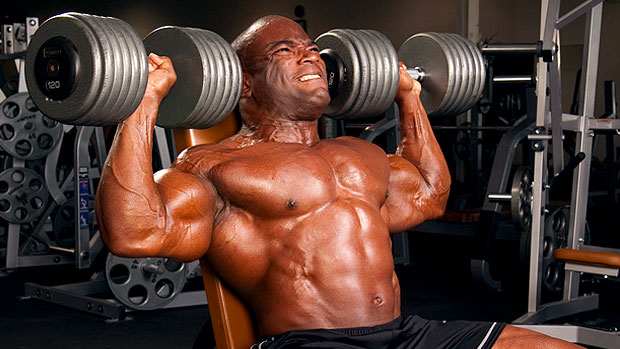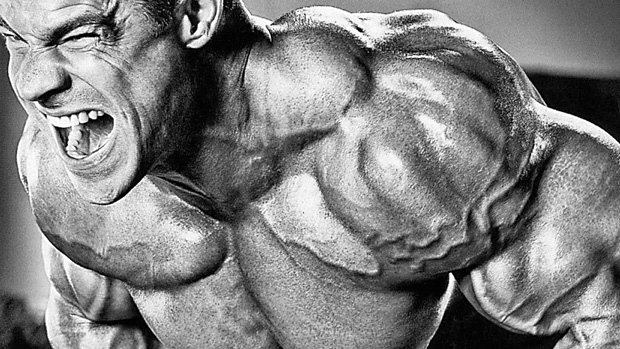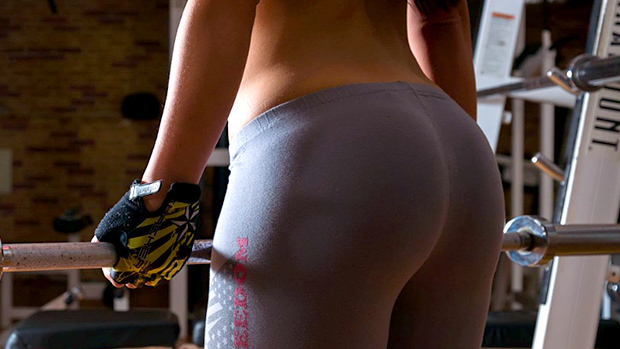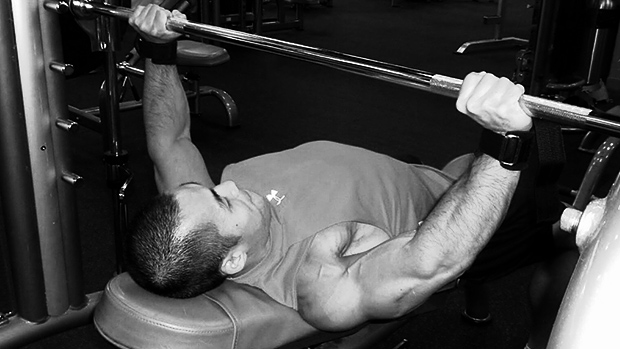One Of Those Days
Ever had one of those days where you just couldn't get into the flow of
your workout? Or worse yet, you don't even make it to the gym? It's happened
to all of us before. The mind is willing, but the body just isn't ready (or
vice versa).
The truth is, you can influence how you perform in the gym several days before
you ever work out! I'm going to cover the things you can do from a few days
before, up to the things you should be doing during your workout to maximize
your performance each and every time you hit the iron.
Before we go on, let's take a survey here: How many of you have skipped
workouts in the past year? The past month? The past week? If it's more recent,
what was the exact cause for missing your workout?
Sure, there are legitimate reasons for missing workouts (illness, emergency,
family obligations), but I'm talking about either just being too lazy to
workout or not being motivated to work out. (And yes, there's a difference!)
My goal with this article is twofold:
1) To help you miss fewer workouts over the course of the coming weeks,
months, and years.
2) To help you have better workouts over the course of the coming
weeks, months, and years.
What I'm going to do is outline what I do to maximize my performance in
each and every workout. I've also used this scheme with many clients and
athletes with excellent results. Simply put, more productive workouts lead
to more muscle, less fat, better performance, and overall improvements in
your strength and physique.
Let's jump into this and see what you can use to have better workouts more
consistently!
Key #1: Visualization
I'm sure some of you are going to flip out and say that this is hocus-pocus.
But I'll also guarantee that a large percentage of successful lifters and
athletes use some sort of visualization technique.
I remember in my younger years reading an article about Robby Robinson and
his deadlift workouts. Robbie talked about getting prepped for this workout
a day or two in advance. He'd go through the lifts in his head, think about
what weights he wanted to use, and imagine himself grinding out flawless
reps that would give him the physique he wanted.
 |
Robby Robinson
I also remember reading about how Clyde "The Glide"
Drexler would use visualization before every basketball game. He'd visualize
the moves he wanted to make, how the game would come to him, and most importantly, him
succeeding!
 |
Clyde Drexler
I firmly believe that visualization is a powerful tool that'll help you
improve your performance. There are tons of articles out there on visualization,
but one of the most important things you need to do is make it as realistic
as possible. Imagine the scene in the gym, what it's going to smell like,
the music pumping in your ears. Feel the knurling on the bar and imagine
how light it feels when you get as tight as possible. It sounds silly, but
this kind of visualization can definitely improve your training!
Next, make sure that you envision yourself succeeding. I've mentioned that
point twice now and for a reason. Many people are so caught up on certain
numbers or goals that they're actually beaten before they enter the gym!
They simply can't imagine themselves being that strong or having the body
they really want. You must do everything possible to eradicate this negative
self-image and re-write it with a new, more positive one.
For big workouts, I'll typically start thinking about it the night or two
before going to bed and again upon waking the day of the workout. For powerlifting
meets, it's basically all I think about for the entire week. Just remember,
you're not stressing over it, just constantly envisioning a successful performance.
Key #2: Review Your Goals
Whenever I need an extra boost of motivation, all I need to do is check
out my current goals and I'm ready to rock. Am I stronger than the average
member of society? Sure. Am I as strong as I want to be? Hell no. Have I
achieved all my lifting-related goals? Not even close. But I'm on my way.
You do have goals, right? If not, that alone could be the reason you haven't
been having great workouts, or simply skipping sessions altogether. If we
don't have goals then what are we training for? Just to "be healthy?" If
that's the case, you wouldn't be reading this article.
If you don't have goals, take the time right now to write some up. I want
you to write at least three goals, all of which are:
1. Very specific
2. Measurable
3. Time sensitive
Then, get your action plan together.
The Action Plan
Now, here's where most people go wrong: they stop after setting a goal.
A goal is great, but it doesn't give you the road between here (where you
are now) and there (where you want to be). This is why you need an action
plan!
Basically, an action plan describes exactly what you need to do to achieve
your goals. Here's an example of a strength goal and action plan:
Goal: Squat 500 pounds by December 31, 2006 (currently squatting 450).
Action Plan: Increase leg strength via more glute-hams, lunges, Bulgarian
squats, and step-ups. Strengthen core with more heavy ab work (windmills,
weighted pillars, heavy side-bends, weighted crunches, etc.). Perform a leg-strengthening
ME exercise two times a month. Perform speed squats at least three times
a month to focus on improving speed and technique.
Now let's look at a physique-related goal and action plan:
Goal: Decrease body fat by 3% by December 31, 2006.
Action Plan: Eat meals/snacks every 2-3 hours (set watch if necessary).
Eat some protein with every feeding and perform cardio at least three times
a week. Measure with calipers every two weeks to determine progress and reassess
how things are going.
These are somewhat general examples, but they should give you an idea of
how to not only set goals, but how to setout a plan to achieve your goals
time and again. Having a solid program that's geared toward your goals will
give you the confidence to train your hardest and know that the results will
come.
Key #3: Stimulants
Stimulants are good, especially if you want to have a great workout. I don't
subscribe to using them year-round or for every training session, but for
big workouts where you want a kick-in-the-pants, they can be invaluable.
What kind of stimulant should you use? That's really up to you. For the
past year I've been using Dr. John Berardi's recommendation of green tea
pre-workout. It's got just enough caffeine to dial me in without making me
over-anxious. I also love the health benefits associated with it, so I'm
always trying to figure out ways to get more green tea into my diet.
What I'll do upon waking is eat breakfast and brew a nice hot cup of green
tea. After breakfast and while drinking the tea, I'll listen to some key
music (discussed below) and visualize the performance of my session. Basically,
I just want 10-15 minutes to get myself dialed in and ready to train.
Finally, I firmly believe that the heat from the green tea helps promote
an increase in core temperature and reduces time needed to warm-up.
 |
However, if it's a really big session or competition, I want that edge over
everyone else. In this case I'll go with some sort of very potent coffee
(such as espresso) or Spike.
 |
Key #4: Warm-Up!
So now we've visualized our workout, reviewed our action plan and goals,
and infused some stimulants into our system. Now it's time to get going.
Even if you're feeling lazy and don't want to workout, try this:
Go to the gym and tell yourself, "I'm just going to warm-up. If I don't
feel better and ready to train after I warm-up, I'll go home for the day."
I've used this trick with myself and with my athletes, and I'd say it has
a 99% success rate. Really! You get moving, the stimulants start to kick
in, the endorphins start flowing, and all of a sudden the last thing you
want to do is go home and sit on your ass. It's a beautiful thing.
Now, let's get to the most efficient/effective ways to warm-up!
Passive Means
First off, if it's cold out, you better bundle up and get some freaking
clothes on. If not, you're either going to have a terrible session because
you never feel "warmed-up" or you're going to injure yourself.
One of my favorite means of passively warming-up is heat liniment. All you
do is buy the hottest stuff you can stand, rub it on your joints/muscles,
and wait for it to do the trick. In just five minutes it's going to feel
like you've been teleported to balmy Las Vegas in the dead of summer.
 |
Another great option here is compressive garments such as knee sleeves,
biking shorts (under your real shorts please!) or elbow sleeves. These items
are great for keeping tissue temperature up around your joints, especially
if you're taking long periods of rest between sets. I've been wearing the
Rehband knee sleeves for two years now and I'll never squat again without
them. They really are that good.
 |
If you have a short drive to the gym or are in a hurry to get started, you
can even apply the liniment and/or compressive garments while at home to
save time. Trust me, by the time you hit the gym, your body will be steaming
hot!
Active Means – General Warm-up
There's been a lot of discussion about warming-up lately, and rightfully
so. Not only is it an underappreciated topic, it's also a misunderstood topic.
I know that some are from the camp of "If a bear attacks you in the woods,
you don't have time to warm-up!" Well, I tell you what, if I meet a bear
in the woods I'm not going to squat, bench, or deadlift him, and if I pull
a hamstring running from him I'm not going to care; I'm still going to run.
After all, in an ideal world, wouldn't we be warmed-up before running into
old Smoky?
 |
Seriously, warming-up is important. If you value the long-term health of
your muscles, joints, and body in general, I hope you're warming up before
you put a couple hundred pounds on your back and squat it below parallel.
The only real question is, what's the best way to warm-up?
Scientific research leads us to believe that a dynamic, movement-oriented
warm-up going through full ranges of motion is the best option available.
Eric Cressey and I outline over thirty exercises in our Magnificent Mobility DVD.
It's the only resource you'll need on the topic.
Active Means – Specific Warm-up
Here are some general rules I like to adhere to:
• Use the general and passive means to improve core temperature. This
shouldn't be done using your core lifts!
• Perform some light and gradual warm-ups with whatever your
"core" exercise is for the day (squat, bench, deadlift, chin-up, etc.).
• Perform enough repetitions to groove the technique and performance of
the lift, without tiring yourself out.
This isn't rocket science, but I often see people who do endless warm-ups
with weights too close to their work sets. By the time they're actually ready
to perform said work sets, they're toast!
When in doubt, think of it like this: The passive means and general warm-up
are what physically increase core temperature and
"warm you up," while the specific warm-up is more for grooving technique
and getting you mentally ready to move some heavy iron. Hopefully this clears
things up a bit.
Key #5: Music
Music is one of the most potent motivators you have in your arsenal. For
those of you training in a commercial facility, I have one word for you:
iPod.
 |
Up until this point in my life, I've never had to train in a true "commercial" facility.
While a small part of me dies each time I train there, I've learned to survive
by scowling at all the people who look my way and turning my iPod up to ear-drum
shattering levels.
Now, while I'm admittedly not as hardcore as some of you out there, I still
appreciate the training effects of solid heavy metal music. If you're looking
for decent training music, here's just a small sample of groups that can
help you out:
Metallica (older stuff only)
Godsmack
Rob Zombie
Rage Against the Machine
AC/DC
DMX
2Pac
Celine Dion (kidding!)
 |
Again, this is just what works for me, but I know that these musicians alone
have gotten me through a large number of my training sessions in the past
few years. Good music equals good workouts.
Key #6: Make It Routine!
This could be the most important bit of advice. The more I read about great
athletes, the more I understand about how much they revel in developing and
following a routine. You'd be wise to do the same.
No matter what keys you choose to apply from above, if you make them into
your own individual routine, your body will know exactly when to perform
each and every time you ask it to. Simply put, you should strive to make
your pre and peri-workout ritual the same each and every time you train.
Consistency in your routine pre-workout will lead to consistent performance during your
workout.
Summary
Hopefully I've outlined a few things that you can put into your training
toolbox to get more out of your workouts. It's nothing groundbreaking, just
solid advice that can help you achieve your training goals, whatever they
may be.
If you take nothing else from this article, know these two simple facts:
Fact #1: If you train more consistently, you'll make more consistent gains.
Fact #2: If you have better workouts more consistently, you'll make better
gains more consistently.
Now get your ass to the gym and have a great workout!





